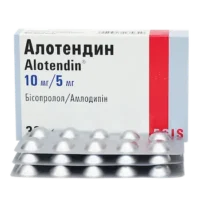Description
Flecainid SAN (flecainide acetate) Tablets 50 mg. №30
Ingredients
Active ingredient: Flecainide acetate
Other ingredients: Microcrystalline cellulose, lactose monohydrate, colloidal anhydrous silica, magnesium stearate.
Dosage
Recommended dosage: The usual starting dose is 50 mg every 12 hours. Dosage may be increased gradually under medical supervision.
Indications
Indicated for: Treatment of documented ventricular arrhythmias.
Contraindications
Do not use if: Hypersensitivity to flecainide, severe conduction disturbances, cardiogenic shock, severe heart failure.
Directions
Administration: Swallow the tablets whole with a glass of water. Do not crush or chew the tablets.
Scientific Evidence
Pharmacological effects: Flecainide is a class Ic antiarrhythmic drug that works by inhibiting the fast inward sodium current in cardiac tissues, thereby stabilizing the cell membrane and reducing excitability.
Clinical trials: Clinical studies have shown that flecainide is effective in suppressing ventricular arrhythmias and maintaining sinus rhythm in patients with certain cardiac conditions.
Additional Information
Warnings: Flecainide may cause proarrhythmic effects and should be used with caution in patients with structural heart disease. Regular monitoring of cardiac function is recommended during treatment.
Storage: Store in a cool, dry place away from direct sunlight. Keep out of reach of children.




